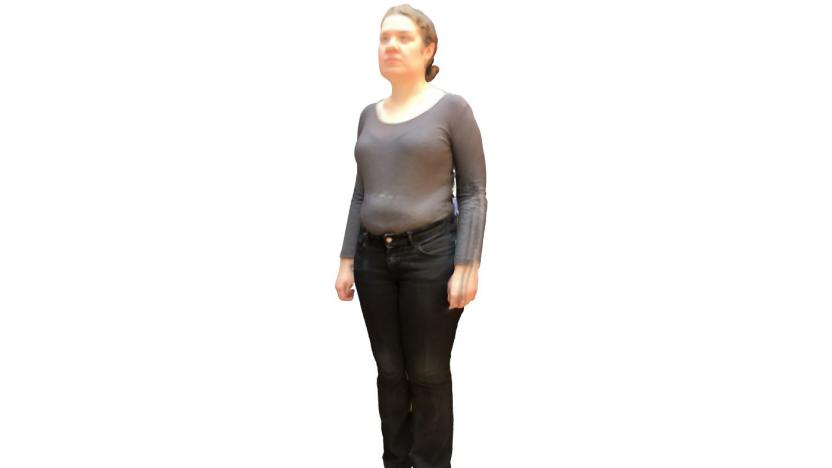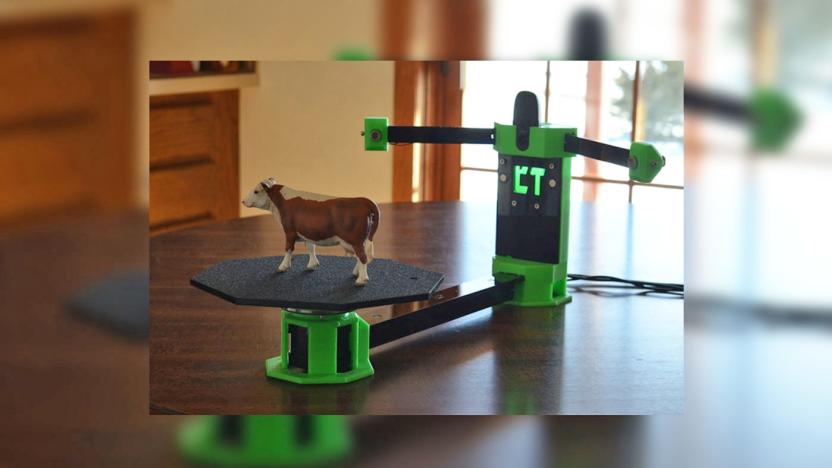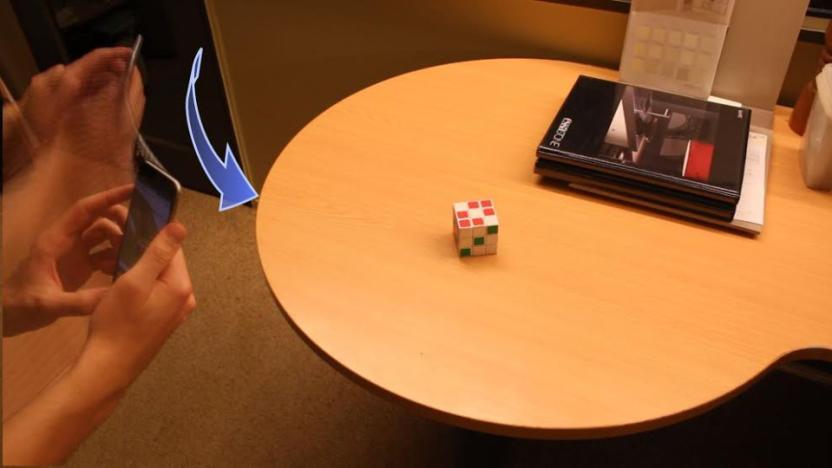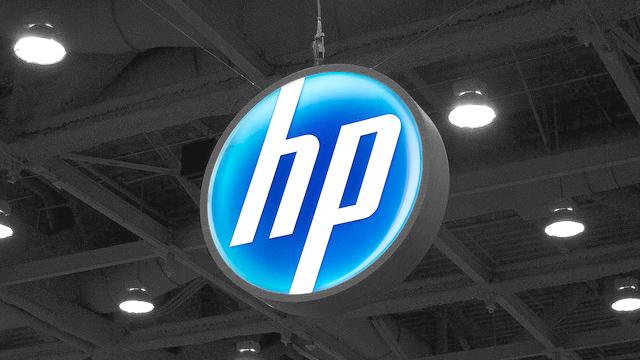3Dscanner
Latest

The ShapeScale 3D scanner can color-code your body changes
I am trying to get in shape. I work out regularly and have been eating better. But still, whenever I step on my Fitbit Aria scale, my weight or body fat percentage don't seem to have budged much. It's frustrating, even when it seems that certain parts have gotten smaller or more toned. Unless I whip out a caliper and pinch my bits of flab for precise measurements, I don't really know what's happening. The ShapeScale, available for pre-order starting today, might solve that conundrum for me. This $499 scale and 3D scanner creates a 360-degree image of a user's body, forming a colorful visual aid that highlights which bits are getting bigger and smaller.
Kris Naudus05.10.2017
Candy Mechanics turns heads into 3D chocolate lollipops
The holidays are a time to forget about your fitness goals and indulge. And what better to stuff your face with than, well, your face? Candy Mechanics is in the business of personalised chocolate, but the company's latest service takes that idea one step further: chocolate people. Or rather, chocolate heads, known as Lolpops. All you need is a smartphone or tablet to film a 30-second, close-up video of someone's mug from all angles (Candy Mechanics' website talks you through the process). Upload that video, and fancy Autodesk software builds a 3D model from the footage that's then used to create chocolate heads on sticks.
Jamie Rigg12.14.2016
An app update turns this smart pen into a 3D scanner
A smartpen that could already digitally measure pretty much anything will soon also be able to scan objects in 3D. Developed by Instrumments, a company made up of former Misfit creators, the impressive 01 pen will be getting a new app, adding the 3D functionality next Spring. This Pro App will enable users to roll the 01 pen over 3D objects, capturing contours and wirelessly logging and sharing the 3D data.
Tom Regan12.07.2016
Full-body 3D scanning is about to get faster and cheaper
3D scanners come in all shapes and sizes these days, and obviously the bigger you go, the more you have to pay. In the case of full-body scanning, many existing solutions require you to stand still for 12 to 14 seconds which isn't ideal for both the customer and the vendor, plus they tend to take up a large amount of space. Luckily, that won't be the case with a new machine from Japanese startup VRC. Unveiled at CEATEC, the Shun'X -- "shun" meaning "instantaneous" and "x" implying limitless possibilities -- can scan a person in merely four seconds, and its footprint takes up just six square meters of space as opposed to the typical nine to eleven square meters.
Richard Lai10.05.2016
Scientists use 3D scans to 'unwrap' an ancient scroll
The scientific world is developing a knack for reading texts without opening them. Researchers in Israel and the US have conducted the first "virtual unwrapping" of a heavily damaged scroll, the En-Gedi scroll, to read its contents without destroying what's left. The team used a high-resolution volumetric scan to create a 3D model of the scroll, looked for bright pixels in the model (a sign of where the ink would be) and virtually flattened the scroll to make text segments readable.
Jon Fingas09.22.2016
A rare fossil makes an appearance at the Natural History Museum
A nine-year-old girl patiently looked on while a technician pulled up a scan of her specimen. A 3D skull with a pointy beak popped up on the computer screen. The child, wearing clear-framed glasses and a light gray tee with a sequined star on the front, walked up to her father, who carefully put away the skull of a duck inside a round plastic container. They had found the tiny head on a beach and had decided to bring it in for Identification Day at the American Museum of Natural History in New York.
Mona Lalwani05.08.2016
CowTech's $99 3D scanner captures detail from small objects
In today's maker-friendly workshop a 3D scanner is just as useful as 3D printing for replicating small objects. And now there's an option to adding the former gadget to your setup for under $100. The CowTech Ciclop is an open-source 3D scanner with two lasers and a 720p camera (a Logitech webcam, actually) to capture object. It touts the same resolution (0.5mm) as MakerBot's much pricier Digitizer. CowTech's version is based on another open-source 3D scanner, the $400 BQ Ciclop, but a few tweaks dropped the price to a mere $99.
Billy Steele02.25.2016
ICYMI: Robot news round-up, 3D hand scanner and more
#fivemin-widget-blogsmith-image-439685{display:none;} .cke_show_borders #fivemin-widget-blogsmith-image-439685, #postcontentcontainer #fivemin-widget-blogsmith-image-439685{width:570px;display:block;} try{document.getElementById("fivemin-widget-blogsmith-image-439685").style.display="none";}catch(e){}Today on In Case You Missed It: iRobot sold its line of military robots to a US-based firm to focus on Roomba and a new chameleon robot changes color to blend in; a student built a 3D scanner with cameras and Raspberry Pi that is much cheaper than any other scanner; and a new pedestrian detection software from the University of California, San Diego, is nearly as fast as the human brain.
Kerry Davis02.09.2016
3D hand scanner could give you custom braces
Many 3D scanners are built to scan whole objects, but that doesn't necessarily cut it if you're trying to scan a specific part. Ever try to map your own hand? Yeah, that doesn't work very well. However, recent graduate Pieter Smakman has a better way. His custom-built Curatio scanner creates a detailed 3D model of your hand simply by putting your hand inside a ring -- you don't have to wave a device around. It uses relatively off-the-shelf parts for the capture process, too, including Raspberry Pi mini-PCs, 32 (!) cameras and laser pointers.
Jon Fingas02.08.2016
HP's 3D-scanning Sprout Pro PC is built for schools
HP originally pitched its 3D-scanning Sprout computer to creatives and hobbyists, but doesn't it seem like an ideal machine for curious classrooms? The company agrees, apparently. It's introducing the Sprout Pro, a version of the unique all-in-one for businesses and schools. It's brawnier (you get a 6th-generation Core i7 with improved graphics), but the big deal is the addition of software that makes it far more useful from groups. You can share the view from the scanner, the webcam or your screen, in case you want to show a project to the class -- you can even send 2D captures through Skype for Business. There are also tools that turn the downward-facing camera into a pro-grade document scanner and magnifier.
Jon Fingas01.19.2016
Super-sharp 3D cameras may come to your smartphone
Many 3D cameras and scanners produce rough images, especially as they get smaller and cheaper. You often need a big laser scanner just to get reasonably accurate results. If MIT researchers have their way, though, even your smartphone could capture 3D images you'd be proud of. They've developed a technique that uses polarized light (like what you see in sunglasses) to increase the resolution of 3D imaging by up to 1,000 times. Their approach combines Microsoft's Kinect (or a similar depth camera), a polarized camera lens and algorithms to create images based on the light intensity from multiple shots. The result is an imager that spots details just hundreds of micrometers across -- you'd be hard-pressed to notice any imperfections.
Jon Fingas12.02.2015
ICYMI: Pocket 3D scanner, light show record and more
#fivemin-widget-blogsmith-image-440441{display:none;} .cke_show_borders #fivemin-widget-blogsmith-image-440441, #postcontentcontainer #fivemin-widget-blogsmith-image-440441{width:570px;display:block;} try{document.getElementById("fivemin-widget-blogsmith-image-440441").style.display="none";}catch(e){}Today on In Case You Missed It: Russia set a world record for the largest projected light show that took 140 Panasonic projectors to display. A Kickstarter project for Ulo the security camera is truly one of the most adorable pieces of tech we've seen for quite some time. And the EORA 3D scanner attaches to a smartphone and can upload scans to 3D compatible printing services right from the app.
Kerry Davis10.22.2015
Microsoft wants you to scan in 3D using only your phone
If you want to do some 3D scanning, you usually have to get either a dedicated scanner or a less-than-elegant add-on. Microsoft Research and the University of Oxford think there's a better way, though. Their MobileFusion project captures 3D models using only an app on your smartphone. The software scans objects by comparing image frames from your phone's camera and creating stereo depth maps from the results -- you just have to walk around an object to get more detail. It's much like Kinect Fusion, but you're not tied to either a PC or a clunky peripheral.
Jon Fingas08.24.2015
Caltech wants to equip phones with built-in 3D scanners
Wouldn't it be great if we can use phones to 3D scan every day objects for printing? A research team from Caltech has designed a cheap and tiny camera chip that could make that happen. Even better, the team claims it can take 3D scans so precise, it could lead to "replica[s] accurate to within microns of the original object[s]." The silicon chip called nanophotonic coherent imager (NCI) is less than a millimeter square, so it can fit within actual phones or cameras without the need for extra hardware. It can capture an object's height, depth and width using tiny LIDARs that immerse an object in laser beams. The light that bounces off the object is then analyzed to determine its size and other details.
Mariella Moon04.05.2015
Create better 3D models by waving your smartphone around
Sure your smartphone makes for a passable 3D scanner, but it still can't determine the size of an item. Fortunately, Carnegie Mellon researchers are able to discover the scale of an object using a smartphone's camera and its IMU (inertial measurement unit). They just have to make sure to move the phone slow enough that that there's no motion blur during capture. If the feature gets wide adoption, you may soon be able to go shopping for furniture without lugging a measure tape around town.
Roberto Baldwin04.01.2015
Art exhibit lets you draw on a 3D self-portrait
Most self-portraits are, by definition, solo affairs. However, artists Alon Chitayat and Rosalie Yu are blurring those lines a bit. Their Skin Deep art installation lets you draw on 3D-scanned models of the creators, giving their self-portraits your own creative spin. You don't even need any special tools -- all you do is doodle on specially marked paper, and webcams translate the relevant sections to textures. While you sadly won't have an easy time trying Skin Deep yourself (it was made as part of New York University's Interactive Telecommunications Program), it's easy to see the underlying concept applying elsewhere. You could see games where players personalize their characters, or 3D painting programs where real-world art adds some flair to digital masterpieces.
Jon Fingas02.23.2015
HP to show off its 3D-scanning 'Sprout' PC next week
HP is synonymous with mass-market PCs and notebooks, but according to a report from Re/code, HP is trying it proverbial hand at something new. According to the usual slew of unnamed sources, the company (which is currently undergoing some business mitosis) will show off a novel new Windows PC called the Sprout at an event in New York next week. We're not using the word "novel" lightly here, either: the Sprout is comprised of a big flat screen display paired with an expansive surface for touch input and a combination projector/3D scanner that hangs above it.
Chris Velazco10.21.2014
Museum teams up with Samsung to render mummies in 3D (video)
Thanks to more advanced medical CT scanners, we can now look at what's inside the British Museum's mummies... even if they remain wrapped. The museum has partnered with Samsung to provide 3D visuals for eight mummies of people who lived in the Nile Valley as far back as 4,000 years ago created using high-res CT scans. These visuals (some of them even interactive) show you what lies underneath all those mummified layers, from accessories and hairstyles that indicate their status in life, to the state of their health when they passed away. For instance, you'll see that a man of high status was buried with gold leaves and facial features painted on his wrappings, while a lowly temple doorkeeper had his severed head roughly reattached with wooden poles. The exhibit's already live for anyone interested in (digitally) peeling layers off the ancient remains, and it'll be around until November 30th this year.
Mariella Moon05.27.2014
A sub-$600 desktop 3D scanner that folds into a box
Hidden in amongst the armies of 3D scanners in the South Hall of CES is the Matterform: a crowdfunded, $579 desktop 3D scanner that's also its own carrying case. The device operates on similar principles as other devices in the space, namely MakerBot's Digitizer. There are a couple of clear differences between the two offerings, right off the bat; first and foremost the price, with Matterform's offering coming in at a fraction of MakerBot's scanner. Also cool is the fact that the rotating bed also raises and lowers, so you get more angles for a fuller picture of the object being scanned. And then there's the fact that the whole thing folds up into a rugged case with a handle, for those ever-important 3D-scanning house calls. There's more info in the source link, including video of the included software in action. You can also pre-order the device there, if you're so inclined.
Brian Heater01.10.2014
Here's that $500 3D scanner for the iPad
That new consumer 3D scanner we told you about a little while ago? Here it is. Well, sort of. This iSense is actually a prototype, as you can probably tell from the 3D printed mold behind the camera. We asked CEO Avi Reichental if there was any possibility that the company might 3D print the casing at some point, to help future-proof the peripheral, and he certainly seemed open to the idea, though don't expect that in the version of the product shipping in Q2. At a cursory glance, the camera and the sensor appear similar -- if not exactly the same -- as the ones found on the sense. Around this, you'll find a brushed metal housing that helps the camera blend in a bit more with the iPad's backing. As for why this unit is $100 more than the Sense, we suspect it has something to do with the much smaller form factor, which helps make this a truly portable scanner, with a Lightning cable that plugs directly into the tablet. We couldn't take a shot of the software, as that's also still firmly in the beta stage, though you can expect it to be pretty similar to what you get with the Sense.
Brian Heater01.07.2014